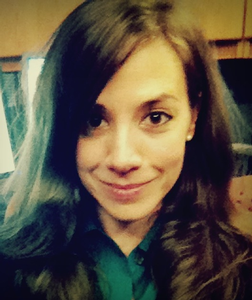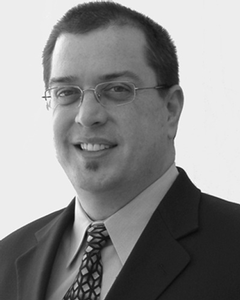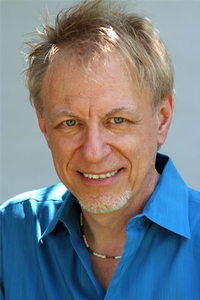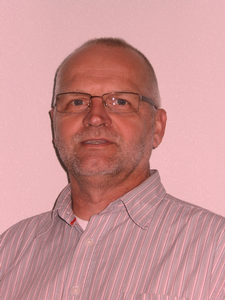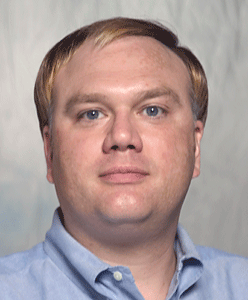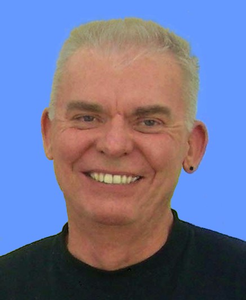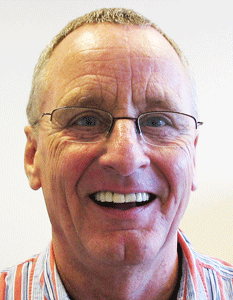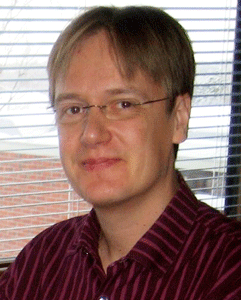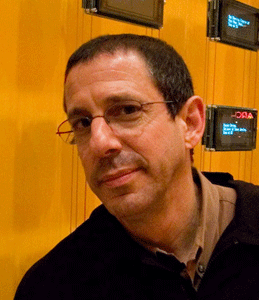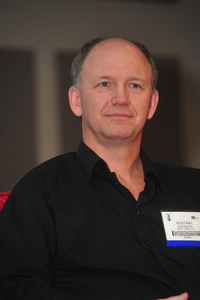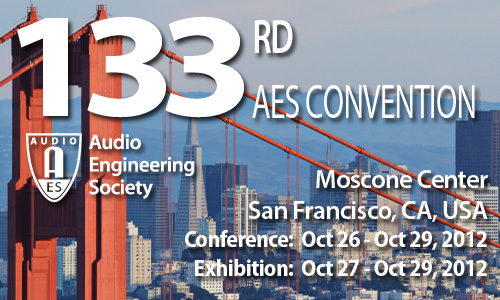
AES San Francisco 2012
Tutorial Details
Friday, October 26, 9:00 am — 10:30 am (Room 133)
T1 - Noise on the Brain—Hearing Damage on the Other Side: Part II
Presenter:Poppy Crum, Dolby Laboratories - San Francisco, CA, USA
Abstract:
Did you know that drinking a glass of orange juice every day may actually protect your hearing? Most discussions of hearing damage focus on what happens to the cochlea and inner ear. While this understanding is crucial to predicting and avoiding trauma that can lead to hearing loss, both acoustic and chemical stimuli can also have significant effects on higher brain areas. In some cases, thresholds and audiograms can look completely normal but listeners may have great difficulty hearing a conversation in a noisy environment. This session will explore the latest research regarding the effects of acoustic and chemical trauma, and how this damage manifests throughout the auditory pathway as changes in hearing sensitivity, cognition, and the experience of tinnitus. We will also consider recent research in chemically preserving hearing and combating these conditions with supplements as common as Vitamin C!
Friday, October 26, 2:00 pm — 4:00 pm (Room 130)
T2 - Forensic Digital Data Analysis
Chair:Douglas Lacey, DL Technology LLC - Fredericksburg, VA, USA
Abstract:
The analysis of digital audio is often required in forensics when the provenance of recorded material is in doubt or when carved material is recovered during investigations. Methods often involve spectral and statistical analyses to determine the nature of an audio recording but this event will explore additional analyses of the data that composes a digital audio file expanding on a recent workshop given at the 46th International Conference of the AES on Audio Forensics. Following a short introduction and demonstration of the classical “hex editor” that allows the viewing of the raw contents of a file, interpretation of a file's structure, analysis of embedded metadata that otherwise may not be apparent, and real case examples will be shared.
Friday, October 26, 4:00 pm — 6:00 pm (Room 132)
T3 - Social Media for Engineers and Producers
Presenter:Bobby Owsinski, Bobby Owsinski Media Group - Los Angeles, CA, USA; 2b Media - Los Angeles, CA, USA
Abstract:
Facebook, Google+, Twitter, and YouTube are important elements for developing a fan base or client list, but without the proper strategy they can prove ineffective and take so much time that there's none left for creating. This presentation shows engineers, producers, audio professionals, and musicians the best techniques and strategy to utilize social media as a promotional tool without it taking 20 hours a day.
Topics covered include:
Your mailing list—old tech, new importance
Social Media management strategies
Optimizing your YouTube presence
The secrets of viral videos
The online video world is larger than you think
Search Engine Optimization basics
Using Facebook and Twitter for marketing
The secret behind successful tweets
Social media measurement techniques
What’s next?
Saturday, October 27, 9:00 am — 11:00 am (Room 132)
T4 - Small Room Acoustics
Presenter:Ben Kok, BEN KOK acoustic consulting - Uden, Netherlands
Abstract:
Acoustic basics of small rooms will be discussed. Specific issues related to the size of the room (room-modes) will be addressed. Absorption, reflection, diffraction, diffusion, and how to use it, as well as specific aspects regarding low frequency treatment will be discussed.
Although this will not be a studio design class, specifics and differences of recording rooms and control rooms will be identified, including considerations for loudspeaker and microphone placement.
Saturday, October 27, 11:00 am — 1:00 pm (Room 132)
T5 - Getting the Sound Out of (and Into) Your Head: The Practical Acoustics of Headsets
Presenter:Christopher Struck, CJS Labs - San Francisco, CA, USA
Abstract:
The electroacoustics of headsets and other head-worn devices are presented. The Insertion Gain concept is reviewed and appropriate free and diffuse field target responses are detailed. The selection and use of appropriate instrumentation, including ear and mouth simulators, and test manikins appropriate for head-worn devices are described. Boom, close-talking, and noise-canceling microphone tests are shown and practical methods are discussed for obtaining consistent data. Relevant standards are reviewed, typical measurement examples are described, and applications of these methods to analogue, USB, and Bluetooth wireless devices are explained.
Saturday, October 27, 2:00 pm — 3:00 pm (Room 120)
T6 - Secrets of the Silent Studio
Presenter:Jamie Fox, The Engineering Enterprise - Alameda, CA, USA
Abstract:
How does one create recording studios with a low noise floor? Would it be possible to apply the same technology to music festivals and concert halls? The goal of this presentation is to explain simple and effective methods for studio and venue designers to lower the noise floor by orders of magnitude, thereby increasing the dynamic range. “The secrets,” include a revolutionary installation method for power wiring. Come learn how this new concept was applied to the Stanford Bing Concert Hall, scheduled to open in 2013.
Saturday, October 27, 4:15 pm — 5:15 pm (Room 133)
T7 - The Magic of Analog Tape
Presenter:Mike Spitz
Abstract:
While the digital modeling market continues to expand, there continues to be a sizable demand for recording with analog tape, but what continues to make using analog tape so special? This tutorial aims to illustrate many of the techniques and strategies to leverage this age-defying medium and empower the group with new skills to maximize their returns when recording with analog tape. This class provides a unique opportunity to gain knowledge from the industry's modern leader in analog tape technology, Mike Spitz, of ATR Service Co. and ATR Magnetics. Learn from the master some of the secrets of maximizing calibration, formulas, levels, preparing mixes for vinyl disc cutting, and other techniques that make the analog tape medium sought after.
Sunday, October 28, 11:00 am — 1:00 pm (Room 132)
T8 - An Overview of Audio System Grounding and Interfacing
Presenter:William E. Whitlock, Jensen Transformers, Inc. - Chatsworth, CA, USA; Whitlock Consulting - Oxnard, CA, USA
Abstract:
Equipment makers like to pretend the problems don’t exist, but this tutorial replaces hype and myth with insight and knowledge, revealing the true causes of system noise and ground loops. Unbalanced interfaces are exquisitely vulnerable to noise due to an intrinsic problem. Although balanced interfaces are theoretically noise-free, they’re widely misunderstood by equipment designers, which often results in inadequate noise rejection in real-world systems. Because of a widespread design error, some equipment has a built-in noise problem. Simple, no-test-equipment, troubleshooting methods can pinpoint the location and cause of system noise. Ground isolators in the signal path solve the fundamental noise coupling problems. Also discussed are unbalanced to balanced connections, RF interference, and power line treatments. Some widely used “cures” are both illegal and deadly.
Sunday, October 28, 2:00 pm — 4:00 pm (Room 132)
T9 - Large Room Acoustics
Presenter:Diemer de Vries, RWTH Aachen University - Aachen, Germany; TU Delft - Delft, Netherlands
Abstract:
In this tutorial, the traditional and modern ways to describe the acoustical properties of "large" rooms—having dimensions large in comparison to the average wavelength of the relevant frequencies of the speech or music to be (re-)produced—will be discussed. Theoretical models, measurement techniques, the link between objective data and the human perception will be discussed. Is it the reverberation time, or the impulse response, or is there more to take into account to come to a good assessment?
Monday, October 29, 9:00 am — 10:30 am (Room 131)
T10 - Binaural Auditory Models
Presenter:Ville Pulkki, Aalto University - Espoo, Finland
Abstract:
The working principles of brain mechanisms of binaural hearing have been debated during the last decade. In 1990s the common thinking was that human binaural decoding is based on delay lines and coincidence counters, as proposed by the Jeffress model. Later, some neurophysiological findings questioned the existence of such delay lines, and some evidence was found bolstering the count-comparison model proposed by Bekesy. In a count-comparison model, the binaural differences are rate-coded between the left and brain right hemispheres. This tutorial will introduce the basic principles of most common binaural auditory models and review some latest improvements in the models.
Monday, October 29, 9:00 am — 10:45 am (Room 132)
T11 - Building Hearing Awareness into Audio Curricula
Presenter:S. Benjamin Kanters, Columbia College - Chicago, IL, USA; Hear Tomorrow
Abstract:
With the increasing incidence of hearing disorders, particularly from entertainment media, it is incumbent on audio programs to begin addressing hearing awareness with students (and professionals) in audio.
Working from materials developed for the Hearing Conservation Workshop, this tutorial will give students, professors, and professionals tools to teach and learn hearing physiology, disorders, and conservation. This will include teaching techniques, graphics, and animations that illustrate principles of hearing physiology. The success of the Workshop has proven that, once taught how their hearing works (and how it breaks), engineers develop a sense of “ownership” of their ears and become concerned about their hearing health. They are then in a unique position to act as role models of hearing awareness to their clients and the music-listening public.
Monday, October 29, 10:45 am — 12:15 pm (Room 131)
T12 - Sound System Intelligibility
Presenters:Ben Kok, BEN KOK acoustic consulting - Uden, Netherlands
Peter Mapp, Peter Mapp Associates - Colchester, Essex, UK
Abstract:
The tutorial will discuss the background to speech intelligibility and its measurement, how room acoustics can potentially affect intelligibility, and what measures can be taken to optimize the intelligibility of a sound system. Practical examples of real world problems and solutions will be given based the wide experience of the two presenters.
Monday, October 29, 1:30 pm — 3:30 pm (Room 133)
T13 - Mastering for Vinyl—Today's Challenges
Presenter:Scott Hull, Masterdisk - New York, NY, USA
Abstract:
Scott Hull has been mastering for vinyl and digital for 28 years, seeing formats come, and go, and come back again. In the last few years there has been a renewed interest in producing vinyl among modern artists.
What has to be considered when you mix / master your music for vinyl? Scott will dig deep into the quality control issues and discuss several sure ways to sound great on your first pressing. Topics will include:
Why contemporary CD mastering techniques do not produce the best sounding vinyl records.
Long Sides—The relationship between Volume, Duration, and Quality.
The Turntable—what does yours sound like?
The quality control process: mixing – mastering – plating – pressing.
The realities of the current vinyl market.
Modern trends in record making / record sales.
